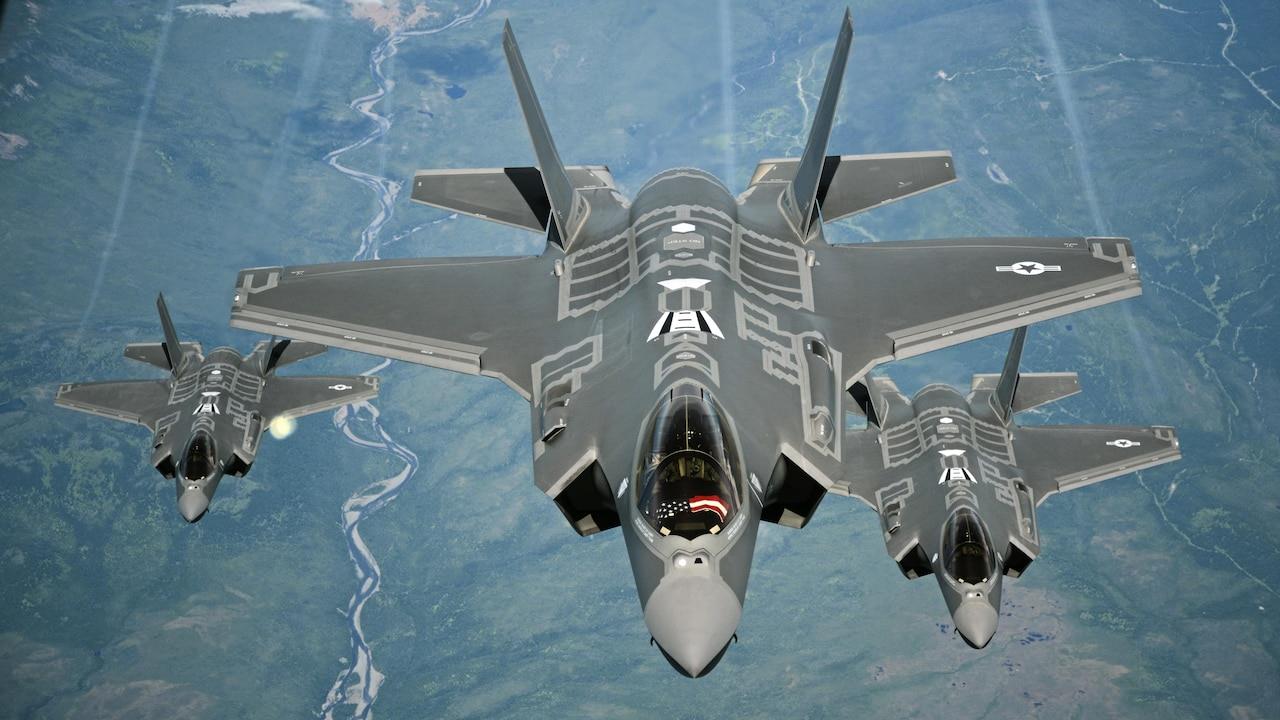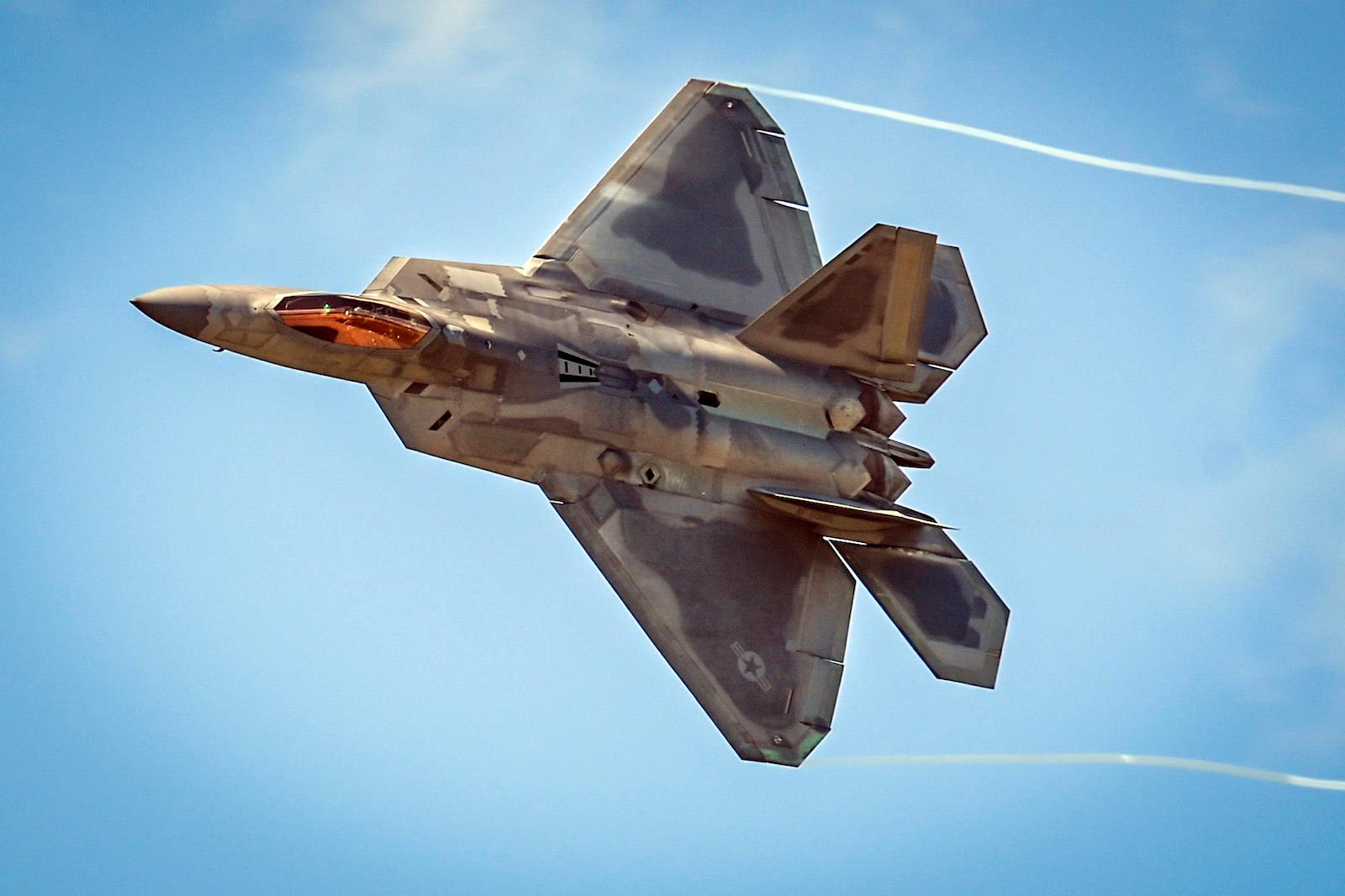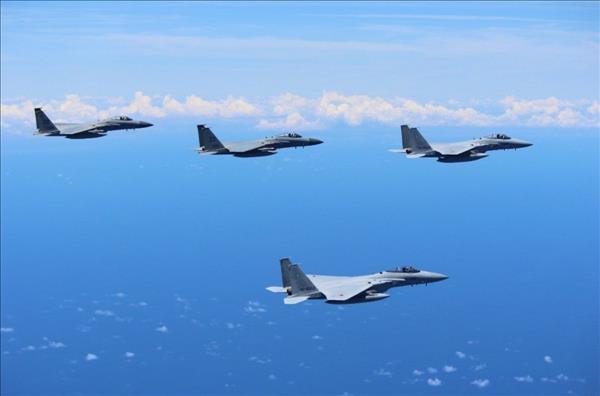(MENAFN- Asia Times) :[Major Gruver is entering Joe Kelly's Japanese home for the first time] Hey, off with the shoes. You don't wear shoes in a Japanese house.
(Marlon Brando):Okay, comin' off… What about the pants?
Now it is the turn of the two squadrons of F-15s based in Okinawa. These planes arrived at Kadena Air Base on the island in 1979.
Since then they have been upgraded with new radars, but no other major fixes. They serve as the lynchpin of US defenses in the region, with the primary duty of stopping a Chinese attack on Japan or Taiwan.
There are two squadrons at Kadena that are going away. The 44th Flight Squadron is known as the Vampires while the 67th Flight Squadron is referred to as the Fighting Cocks.
Retired USAF Lieutenant General Dave Deptula, who served as the Vice Commander of the Pacific Air Force, told the that removing the F-15s from Okinawa would put particular stress on the Air Force.
These aircraft are F-15 C models (and a few F-15D model two-seaters used for training). The US originally built 483 of these aircraft but only 43 of them were upgraded with that can pick up Chinese aircraft, possibly including their newest stealth product, the
A typical US Air Force squadron has between 18 and 24 aircraft, and the only upgraded F-15s in use today are at Kadena. Moreover, these are the only combat-coded F-15s now in service in the Air Force.
Combat coding means these aircraft can handle the latest weapons such as the medium range air to air missile. Today the AMRAAM is America's primary beyond-visual-range air-to-air missile.
The F-15C is definitely not a stealth platform. However, it is an air superiority aircraft that can operate as a fighter and as a precision bomber, using its high altitude capability, its maneuverability and its range. Neither the F-16 nor the stealth F-35 are regarded as air superiority fighters.
The F-35, in addition, has to rely on its stealthy design and beyond-visual-range weapons to engage the enemy. If it gets too close to agile enemy fighters, it will run into trouble because it is not designed to turn sharply or engage in close-in combat maneuvers.

The F-35 fighter jet is not an air superiority plane. Image: US Air Force
In this respect, the F-15 is different because it is a street fighter as well as an air superiority plane.
But they are old, in fact too old. The average age of the F-15s at Kadena is nearing 38 years. The pilots who fly them were all born after the F-15s rolled off the assembly line.
Age in any aircraft brings a plethora of problems. The airframes deteriorate. Cracks and corrosion infest the body of the plane. The electronics are ancient and no longer produced. The engines are tired and don't always perform at full power. The wiring becomes brittle and wiring connectors fail.
The US Air Force considered a service life extension program (SLEP) for these aircraft, but they dropped the idea as impractical. Today, the Kadena F-15s are flying well beyond their assessed service life, meaning they are surviving on borrowed time.
In today's Air Force this applies to many different platforms, fighters, bombers, air refuelers, electronic warfare planes and more.
Most of them should be replaced, but the Pentagon has put most of its bets, when it comes to fighter aircraft, on the F-35. This is an aircraft that offers many advantages, but it also has limitations such as a lack of close-in combat capability.
There is another new F-15 in the works known as the . It is a step down to turn the F-15 into a stealthy platform. Nonetheless, the F-15 EX is a worthy follow-on to the old F-15s. The Pentagon agreed initially to buy 144 F-15EXs, although the US Air Force did not support the buy.
That number has been cut to 80 in the current Pentagon plan, which is far too few. Whether any of these will eventually find their way to Okinawa is uncertain. There is still some way to go before the new model F-15 is proven out and made ready for operational use.
Meanwhile, the US Air Force has announced it will support Kadena with rotational squadrons of fighter aircraft. The first will be coming to Kadena from Alaska; they will stay at Kadena for six months.
The F-22, despite its age, is the world's best air superiority fighter. It is also the world's best stealth platform as a fighter bomber. It will, at least for six months, boost deterrence in the region at a sensitive and dangerous time.

An F-22 Raptor performs at the Thunder Over New Hampshire Air Show at Pease Air National Guard Base in Portsmouth, N.H., Sept. 11, 2021. Photo: US Air National Guard / Photo: Tech Sergant Steven Tucker
However, no one knows when the F-15s will ship out or when the F-22s will arrive.
Nor are the number of F-22s replacing the F-15s known. Meanwhile, the US Air Force is on the grounds that it would be too costly to put them back in operating condition. Yet the F-22 is the one US fighter that China fears, and for good reason.
A cold hard look at the condition of the US Air Force forms a worrisome picture. While the Air Force is sinking most of its dollars into the F-35, it will be some time before fully capable F-35 squadrons can be deployed. The in hardware and software are still being worked on.
The idea of Kadena just hosting rotational squadrons leaves open the problem of follow-on once the F-22s return home. One solution is to and base the renewed F22s permanently at Kadena.
To do this requires not only investing in the F-22s but also in the support systems needed to maintain them, especially the classified parts including the plane's stealth coating.
An alternative approach would be to commit to the F-15EX for Kadena. But that depends on the success of the F-15 EX effort. Boeing has had its recently in producing satisfactory military aircraft.
In the interest of stability and deterrence, more is needed than only a fragile commitment to rotational squadrons at Kadena. As Major Gruber said,“What about the pants?”
Follow Stephen Bryen on Twitter at


























Comments
No comment